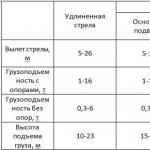(from Greek anti - against, ónyma - name) - these are words with the opposite meaning when used in pairs. Those words enter into antonymic relations, which reveal from opposite sides correlative concepts associated with one circle of objects, phenomena. Words form antonymic pairs based on their lexical meaning. One and the same word, if it is ambiguous, can have several antonyms.
occur within all parts of speech, but the words of an antonymic pair must belong to the same part of speech.
Do not enter into antonymic relations:
- nouns with a specific meaning (house, book, school), proper names;
- numerals, most pronouns;
- words denoting gender (man and woman, son and daughter);
- words with different stylistic coloring;
- words with magnifying or diminutive accents (hand - hands, house - house).
By their structure, antonyms are not homogeneous. Among them there are:
- one-root antonyms: happiness - misfortune, open - close;
- heterogeneous antonyms: black - white, good - bad.
The phenomenon of antonymy is closely related to the polysemy of the word. Each of the meanings of the word can have its own antonyms. Yes, the word fresh in different meanings will have different antonymic pairs: fresh wind - sultry wind, fresh bread - stale bread, fresh shirt - dirty shirt.
Antonymic relations can also arise between different meanings of the same word. For example, to look through means “to get acquainted with something, to check, quickly examining, looking through, reading” and “to skip, not notice, miss”. The combination of opposite meanings in one word is called enantiosemy.
Depending on the distinctive features that words with the opposite meaning have, two types of antonyms can be distinguished general language(or simply language) And contextual speech(author's or individual).
Common language antonyms are regularly reproduced in speech and fixed in the vocabulary (day - night, poor - rich).
Contextual speech antonyms- these are words that enter into antonymous relations only in a certain context: Sing better with a goldfinch than with a nightingale.
The use of antonyms makes speech more vivid and expressive. Antonyms are used in colloquial and artistic speech, in many proverbs and sayings, in the titles of many literary works.
 One of the stylistic figures is built on a sharp opposition of antonyms - antithesis(opposition) - a characteristic by comparing two opposite phenomena or signs: Long live the sun, let the darkness hide! (A.S. Pushkin). Writers often build titles of works using this technique: “War and Peace” (L.N. Tolstoy), “Fathers and Sons” (I.S. Turgenev), “Thick and Thin” (A.P. Chekhov), etc. .
One of the stylistic figures is built on a sharp opposition of antonyms - antithesis(opposition) - a characteristic by comparing two opposite phenomena or signs: Long live the sun, let the darkness hide! (A.S. Pushkin). Writers often build titles of works using this technique: “War and Peace” (L.N. Tolstoy), “Fathers and Sons” (I.S. Turgenev), “Thick and Thin” (A.P. Chekhov), etc. .
Another stylistic device, which is based on the comparison of antonymic meanings, is oxymoron or oxymoron(gr. oxymoron - lit. witty-stupid) - a figure of speech in which logically incompatible concepts are connected: a living corpse, dead souls, ringing silence.
Dictionaries of antonyms will help you choose an antonym for a word.Dictionaries of antonyms- linguistic reference dictionaries that describe antonyms. For example, in dictionary L.A. Vvedenskaya the interpretation of more than 1000 antonymic pairs is given (their synonymous correspondences are also taken into account), the contexts of use are given. A in the dictionary of N.P. Kolesnikova antonyms and paronyms are fixed. The book contains approximately 3,000 paronyms and more than 1,300 pairs of antonyms. There are no illustrations of the use of antonyms in the dictionary.
In addition to antonym dictionaries of a general type, there are also private dictionaries that fix polar relationships in some narrow areas of the vocabulary. This includes, for example, dictionaries of antonyms-phraseological units, dictionaries of antonyms-dialectisms, etc.
Let's take a look at the most common examples of antonyms: good evil; good bad; friend - enemy; day Night; heat - cold; peace - war, quarrel; true False; success - failure; benefit - harm; rich - poor; difficult - easy; generous - stingy; thick - thin; hard - soft; brave - cowardly; White black; fast - slow; high Low; bitter - sweet; hot Cold; wet - dry; full - hungry; new - old; big small; laugh - cry; speak - be silent; love - hate.
Do you have any questions? Can't find an antonym for a word?
To get the help of a tutor - register.
The first lesson is free!
site, with full or partial copying of the material, a link to the source is required.
Antonyms are words that are different in sound and have opposite meanings: lie - truth, evil - good, silence - speak. Examples of antonyms show that they refer to the same part of speech.
Antonymy in Russian is presented much narrower than synonymy. This is explained by the fact that only words that are related in terms of quality (good - bad, native - alien, smart - stupid, thick - rare, high - low), temporal (day - night, early - late), quantitative (single - multiple, many - few), spatial (spacious - cramped, large - small, wide - narrow, high - low) features.
There are antonymic pairs denoting the names of states, actions. Examples of antonyms of this kind: rejoice - grieve, cry - laugh.

Types and examples of antonyms in Russian
According to the structure, antonyms are divided into heterogeneous (morning - evening) and single-root (enter - exit). The opposite of the meaning of one-root antonyms is caused by prefixes. However, it should be remembered that the addition to adverbs and prefixes without-, Not- in most cases, it gives them the value of a weakened opposite (high - low), so the contrast of their values \u200b\u200bis turned out to be "muffled" (low - this does not mean "low"). Based on this, not all prefix formations can be attributed to antonyms, but only those that are the extreme points of the lexical paradigm: strong - powerless, harmful - harmless, successful - unsuccessful.
Antonyms, as well as synonyms, are in close connection with polysemy: empty - serious (conversation); empty - full (cup); empty - expressive (look); empty - meaningful (story). Examples of antonyms show that different meanings of the word "empty" are included in different antonymic pairs. Single-valued words, as well as words with specific meanings (iambic, pencil, desk, notebook, etc.) cannot have antonyms.
Among antonyms, the phenomenon of enantiosemy also exists - this is the development of mutually exclusive, opposite meanings of some polysemantic words: carry (into the room, bring) - carry (out of the room, take away); abandoned (a phrase just said) - abandoned (abandoned, forgotten). The meaning in such cases is specified in the context. Enantiosemy is often the cause of ambiguity in certain expressions. Examples of antonyms of this kind: he listened to the report; the director looked through these lines.

Contextual antonyms are words that are opposed in a specific context: moonlight - sunlight; not a mother, but a daughter; one day - the whole life; wolves are sheep. The polarity of the meanings of such words in the language is not fixed, and their opposition is an individual decision of the author. The writer in such cases reveals the opposite qualities of various concepts and contrasts them in speech. However, these pairs of words are not antonyms.
Antonyms are words that belong to the same part of speech, differ in sound and spelling, and have exactly the opposite meaning. Belonging to one part of speech is not the only condition by which words that have an opposite meaning can be called antonyms; there must be a common feature between such words, for example, when both concepts describe a feeling, time, space, quantity, quality, etc.
In contact with
For example, "before" and "now". In this case, both words are adverbs, they have opposite concepts and refer to the same feature - the description of time ("when? now" or "when? before").
What Wikipedia says
 Antonyms(translated from Greek αντί- means “against” + όνομα “name”) are words of the same part of speech of directly opposite lexical meaning, having differences in spelling and sound: lie - truth, evil - good, silence - speak .
Antonyms(translated from Greek αντί- means “against” + όνομα “name”) are words of the same part of speech of directly opposite lexical meaning, having differences in spelling and sound: lie - truth, evil - good, silence - speak .
Words that are opposite in meaning have recently become the subject of linguistic analysis, which has significantly increased interest in the study of Tatar and Russian antonymy. In addition, this led to the emergence of a number of linguistic studies and various dictionaries of antonyms.
In the vocabulary of the language, lexical units are closely related not only because of the relationship of adjacency and similarity, but also because of the semantic variants of polysemantic words. They do not always contain a feature that can be opposed, therefore they cannot have antonymic relations in the literal sense, but in a figurative sense they acquire an antonym.
Thus, contextual antonyms can have antonymic relationships with a direct meaning, carry an emphatic load and perform a special stylistic function in a sentence.
It is allowed to apply them to words whose meanings reflect qualitative opposite shades, while the basis of their meanings is always a common feature (height, weight, time of day, feeling, etc.); also, only those words that belong to the same stylistic or grammatical category can be contrasted.
Language antonyms cannot be words related to different parts of speech or lexical levels. Also among antonyms there are no numerals, pronouns and proper names.
The types of antonym concepts expressed include:

Types of antonyms by structure:
- one-root- are formed with the help of prefixes that are opposite in meaning (for example: enter - leave) or with the help of prefixes added to the main word (for example: monopoly - antimonopoly);
- heterogeneous- having different roots (for example: back and forth).
From the point of view of speech and language, antonyms are divided into two types: contextual and linguistic:
- Language or usual antonyms take place in the language system (for example: poor - rich);
- Contextual- speech, contextual, occasional antonyms arise in a certain context; often found in sayings and proverbs. In order to check or determine this type, it is necessary to reduce the opposite words to a language pair (for example: golden - copper half, or expensive - cheap).
Antonymic pairs are distinguished by action, they are proportionate and disproportionate:
- proportionate represent action and reaction (examples: go to bed - get up, get poor - get rich);
- disproportionate express the action and its absence in the broadest sense of the word (for example: think - think, light - extinguish).
Examples in language and literature
We quietly enter September ... into the forest frequent… V thick, there trees are not Judas ... without grumbling, without prowess; month of knot confusion, there good is staying with evil…
In this example, contrastive correlates are applicable (rare - thick, good - evil). The following antonymic pairs belong to the same type of expressed concepts:

Consider other examples:
- child - teenager - adult(countercorrelators);
- come - go(one-root antonyms);
- laugh - cry(commensurate antonyms);
- win - lose(convertives);
- counter-revolution - revolution(vector correlators).
Steam systems
 Antonyms usually form a pair correlation in Russian, as can be seen from examples in various dictionaries. However, this does not mean at all that there can be only one word that is opposite in meaning.
Antonyms usually form a pair correlation in Russian, as can be seen from examples in various dictionaries. However, this does not mean at all that there can be only one word that is opposite in meaning.
Antonymic relations allow showing opposing concepts in the so-called "unclosed" polynomial series (for example: concrete - abstract, abstract; cheerful - sad, boring, dull, sad).
In addition, each member of an antonymous series or pair may have synonyms that do not intersect in antonymic relations. In this case, a kind of system is formed in which antonymic units are located horizontally, and synonymous units are located vertically.
Here are examples of such a system:
- stupid - smart;
- stupid - reasonable;
- brainless - wise;
- headless - heady;
- stupid - sensible.
- rejoice - be sad;
- have fun - be sad;
- rejoice - grieve. study in the article.
Antonyms are words that belong to the same part of speech, differ in pronunciation and spelling, and have opposite meanings. For example, cold - hot, loud - quiet, friend - enemy, rejoice - be sad.
Words can enter into antonymic relations, the meanings of which carry opposite properties, while the comparison should be based on some common feature (size, weight, temperature, speed, etc.). Only words belonging to the same part are contrasted.
Antonymic pairs do not form the following word categories:
- - nouns that have specific objective meanings(tree, cave, pencil);
- - proper nouns(Petya, Vasya);
- - most pronouns and numerals;
- - nouns indicating gender(granddaughter and grandson, aunt and uncle);
- - words from different stylistic categories(be silent and broadcast);
- - words with suffixes with the meaning of increase or decrease(ship and boat, man and human).
According to the structure, antonyms are distinguished:
- single root-formed with the help of prefixes with the opposite meaning (friend - foe, enter - exit);
- heteroroot(high - low, raise - lower, hot - cold).
Antonymy and polysemy of words
Polysemantic words can form antonymous pairs with different words, depending on the meaning to which they are used in a given context:
soft sofa - hard sofa,
soft tone - sharp tone,
soft clay - hard clay.
A special phenomenon in the language is antonymic relations in the structure of the meanings of a polysemantic word ( enantiosemy):
view report(meaning familiarize) - view typo(skip),
borrow a book from a friend(borrow) lend money to a colleague(to lend).
General language and contextual antonyms
– general language(linguistic) antonyms exist in the language system and are reproduced regardless of the context ( darkness - light, big - small);
– contextual(speech, occasional) antonyms appear only in a certain context ( "Ice and fire"- the title of the story by R. Bradbury).
The role of antonyms in speech
Antonyms make our speech brighter and more expressive. They often appear in the titles of works of art. ("War and Peace", "Fathers and Sons"), in proverbs (“In people, honey, but at home, hell”), the use of antonyms underlies a number of stylistic devices.
One of these approaches is antithesis- rhetorical opposition
“They got along. Wave and stone
Poetry and prose, ice and fire.(A.S. Pushkin);
– « I am the lonely son of the earth
You are a radiant vision."(A. A. Blok).
Another take: oxymoron- a combination of concepts that are incompatible from the point of view of logic:
- "Dead Souls"(N. V. Gogol);
- "Ordinary Miracle" ( E. Schwartz);
“Look, she is happy to be sad,
So beautifully naked." (A.A. Akhmatova).
Dictionaries
Special dictionaries of antonyms will help you choose an antonymous pair. We can recommend dictionaries edited by L.A. Vvedenskaya (more than 1,000 pairs of antonyms) and N.P. Kolesnikov (more than 1,300 pairs). In addition, there are highly specialized dictionaries, for example, a dictionary of antonyms-phraseological units or antonyms-dialectisms.
" of Greek origin and is translated as "opposite".
Antonyms are words with the opposite meaning, expressing it with the help of paradigmatic connections.
Antonyms are a very interesting phenomenon of the language, because in the mind of a person are stored in the form of an antonymic pair.
Despite the fact that antonyms are opposed to each other by all their content, their semantic structure is extremely homogeneous. As a rule, antonyms differ in one differential feature.
For example, a pair of antonyms "-" has common semantic features (quality, mood) and only one differential (positive and negative mood).
Due to the homogeneity of the semantic structure, antonyms have almost completely matching compatibility.
Types of antonyms
There are 2 types of antonyms:
1) multi-rooted and single-rooted.
One-root antonyms usually form a non-prefixed and a prefixed word. Examples: friend - foe; bad - not bad; enter - exit; come - walk away.
Different root antonyms are completely different in their external appearance. Examples: stale - fresh; life death.
2) gradual, nongradual and vector antonyms.
Gradual antonyms express the opposite, which implies the existence of intermediate steps between the two extreme points. Examples: brilliant - talented - gifted - average abilities - mediocre - mediocre; - capable - sensible - not stupid - average abilities - stupid - limited - stupid - stupid.
Non-gradual antonyms are concepts between which there is not and cannot be an intermediate degree. Examples: true - false; alive - dead; free - busy; married - single.
Vector antonyms denote the opposite direction of actions, features, qualities and properties. Examples: forget - remember; increase - decrease; supporter - opponent.


















